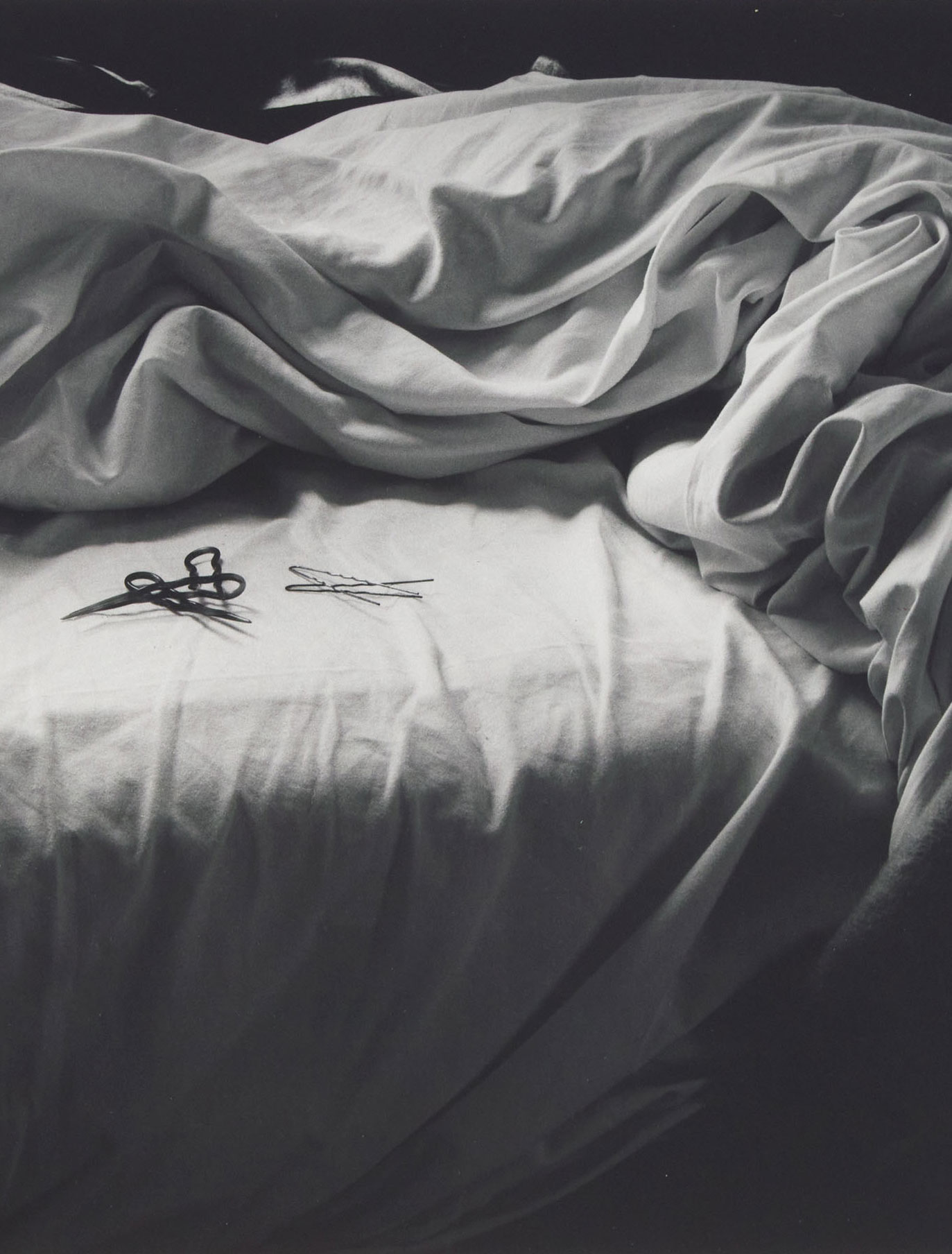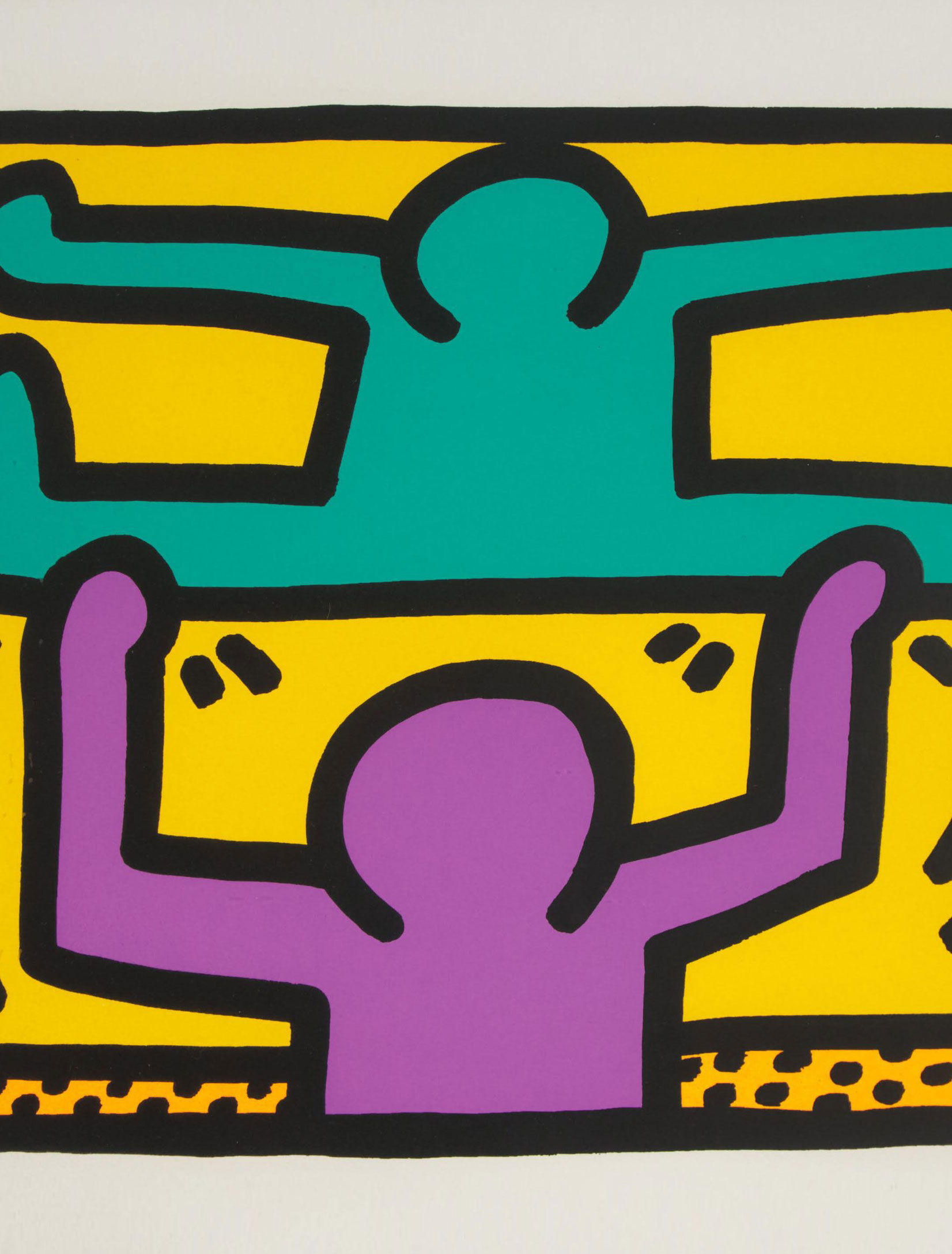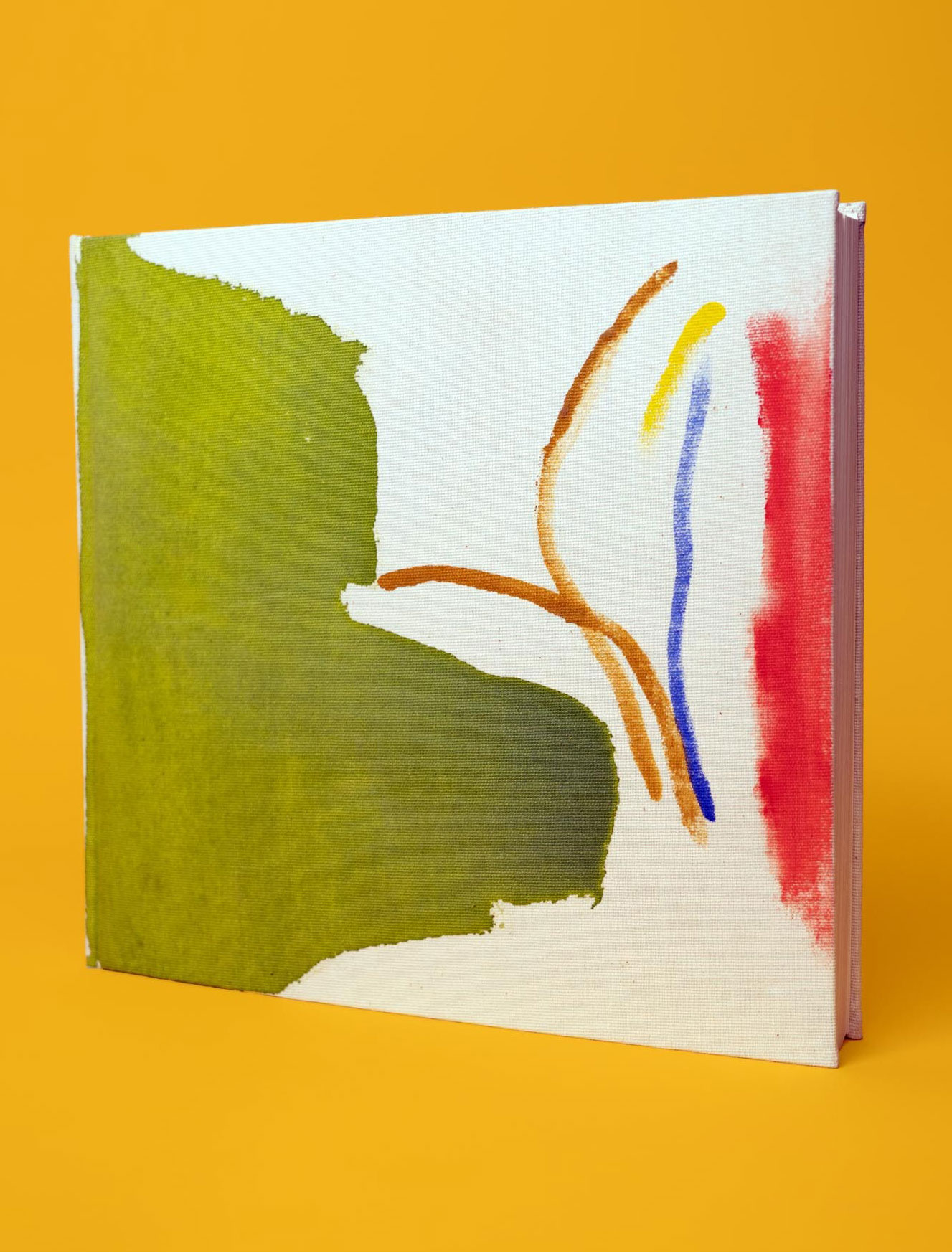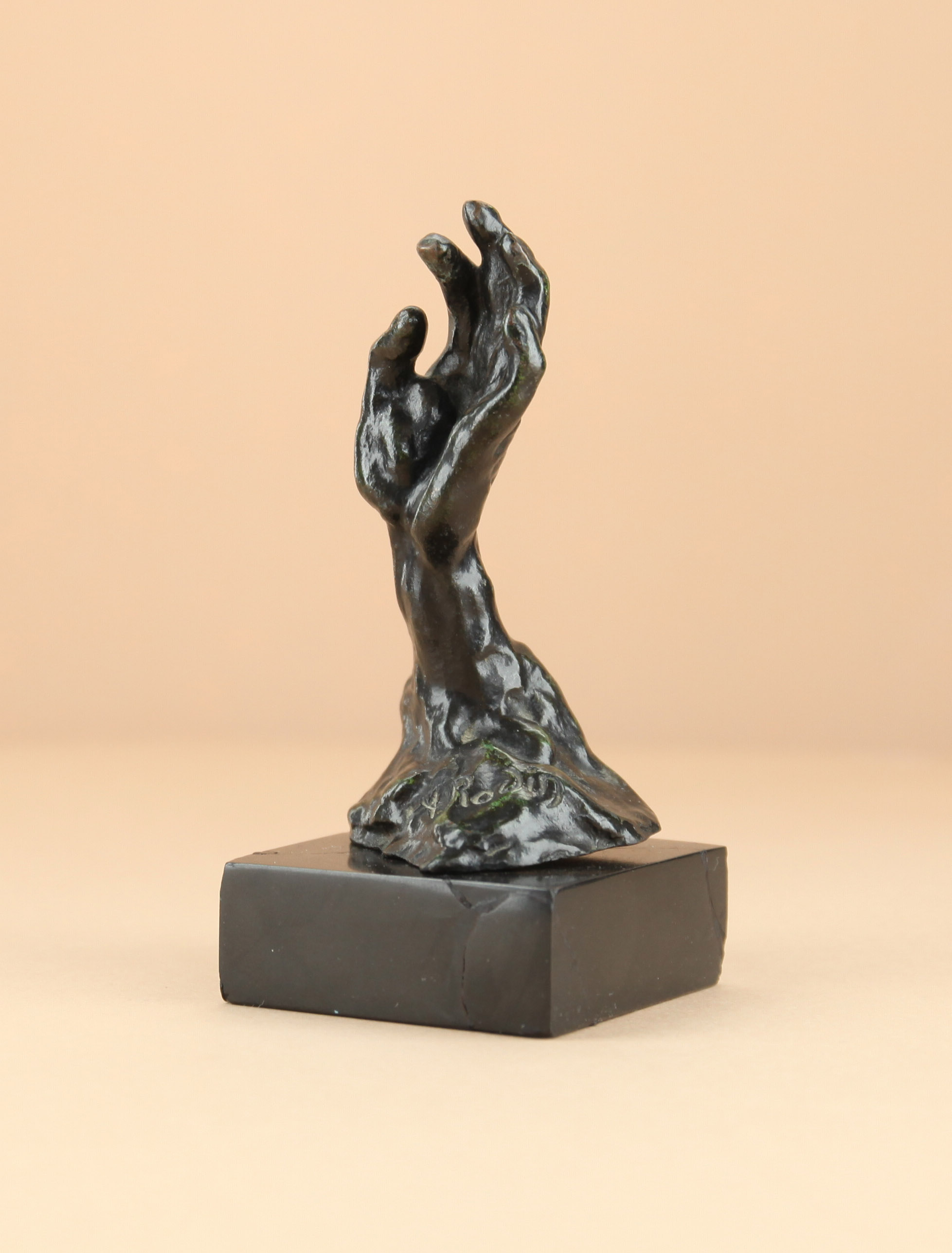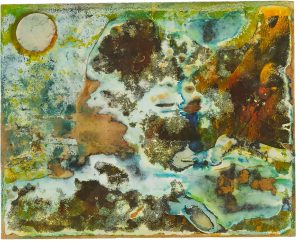
Of Romare Bearden, a friend once said that he lived nine lives—all at the same time.
A broadly talented artist and intellectual, Bearden produced work in fields as diverse as music, photography, the performing arts, history, literature and world art. In the visual arts, Bearden is best known for his collages of Black life and culture, which he infused with religious, literary, mythological and personal stories.
North Carolina to New York City
Though born in Charlotte, North Carolina in 1911, Bearden would be defined by his time spent in New York City. While studying Education at New York University (NYU), Bearden elected to take courses in art, which captured his interest more fully than his major. He supplemented his artistic training with classes at the Art Students League, studying with German Expressionist and exile George Grosz. Of Grosz, Bearden recalled that he “made me realize the artistic possibilities of American Negro subject matter…[he] led me to study composition, through the analysis of Brueghel and the great Dutch masters, and…in the process of refining my draftsmanship, initiated me into the magic world of Ingres, Dürer, Holbein and Poussin.”
Bearden quickly put his artistic skills to use, publishing cartoons and covers for NYU school journals while also contributing articles on art and social issues. Bearden found work as a weekly editorial cartoonist for the Baltimore Afro-American, a job he would hold from 1935-1937. Bearden also found a job as a social worker with the New York City Department of Social Services, an occupation he would maintain from the mid-1930s to the 1960s.
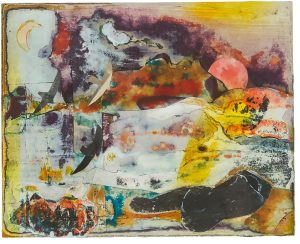
LIFE IN HARLEM
Harlem was “the center of Black intellectual life in the United States,” and Bearden soon became a fixture. Bearden’s studio was located above the Apollo Theatre for 16 years—meaning that visits from friends like Duke Ellington, Langston Hughes, James Baldwin and other Black luminaries were common. Jazz and the blues would be great sources of inspiration, as would the local residents of Harlem.
In 1954, Bearden married dancer and model Nanette Rohan. Rohan was a great supporter of her husband’s art, and soon after their marriage, the two moved from Harlem to Canal Street, consolidating Bearden’s work and living spaces.
Bearden experimented with a range of visual styles. The artist’s early work was realistic, often tinged with religious overtones. Bearden soon transitioned into making Cubist-style paintings. Success came early, with Bearden having his first solo exhibition in Harlem in 1940.
A FORAY INTO COLLAGE
In an era dominated by Abstract Expressionism, Bearden began looking for a way to express himself more clearly. He was looking to communicate his lived experiences as a Black man, one deeply involved in the pursuit of civil rights. Non-representational art did not allow for cohesive narrative expression, so in the early 1960s, Bearden began working with images pulled from the mainstream media. Photographs, magazines, newspapers and clippings—often from publications like Life, Look, Jet and Ebony—were cut up and reassembled into portraits of contemporary Black life. Bearden often made references to the classical Western canon as well as African, Asian and Byzantine art, in addition to crafted forms like quilting. Bearden’s friend, the novelist Ralph Ellison recalled that the artist “stood at his easel sketching and explaining the perspectives of the Dutch and Italian masters. Other times he played with the rhythms of Mondrian and related them to the structure of jazz.”
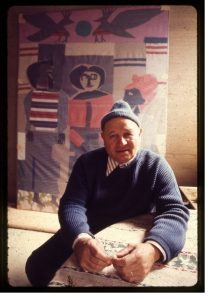
Bearden was continuously evolving the collaged form, introducing flat areas of colour, hand-painted papers and add-ins like foil and fabric. He would manipulate these surfaces by applying bleach, peroxide, paint, erasers or sandpaper, creating artworks one critic referred to as “patchwork cubism.” Ruth Fine, a curator at the National Gallery in Washington, DC, notes the complexity of Bearden’s techniques: “The fact that I couldn’t figure out at first how so many of his collages were made drove me crazy.”
Bearden began experimenting with blowing up his compositions, leading to his seminal “Projections” series in 1964. The work attracted much notice, with the interest and sales allowing him to pursue his art on a full-time basis. His first Canadian show would be held in 1976 at Graphis Gallery, Toronto under the direction of Jerry Greben. There was an excellent response to Bearden’s first Canadian showing of his small “jewel-like collages” and original prints.
SUCCESS AND OBSCURITY
In 1986, his collages appeared on the covers of Fortune and Time magazines. He would be the subject of lifetime retrospectives at the Museum of Modern Art in New York City, the Mint Museum of Art, and the Detroit Institute of the Arts, as was as the recipient of awards, honorary doctorates and a National Medal of Arts, presented by President Ronald Reagan in 1987.
Yet after his death, Bearden slipped out of the history books. Often marginalized due to his race, Bearden was excluded from the canon of modern representational painting. His artwork was also out of step with dominant artistic trends of his time, eschewing abstraction in favour of telling his story as a Black man. However, after years of obscurity, recognition of Bearden’s innovation and pioneering forms is having a renaissance, aided in part by new scholarship, 21st century museum retrospectives, and an improving contextualization of Black art in mainstream collecting practices. No longer in the margins, new eyes have begun to recognize Bearden as one of the most creative and original visual artists of the twentieth century.
Waddington’s is pleased to present two 1970s collages, lot 58 and lot 59, by Bearden in our 20th/21st Century Art auction. Keen collectors should also keep an eye out for other works by the artist scheduled to be auctioned in June.
ABOUT THE AUCTION
Online from April 23-28, the 20th/21st Century Art auction features international and Canadian artists, encompassing works on paper, paintings, bronzes, photography, and mixed-media works created from the early 20th century to the present day. We invite you to browse the full gallery.
Please contact us for more information.



